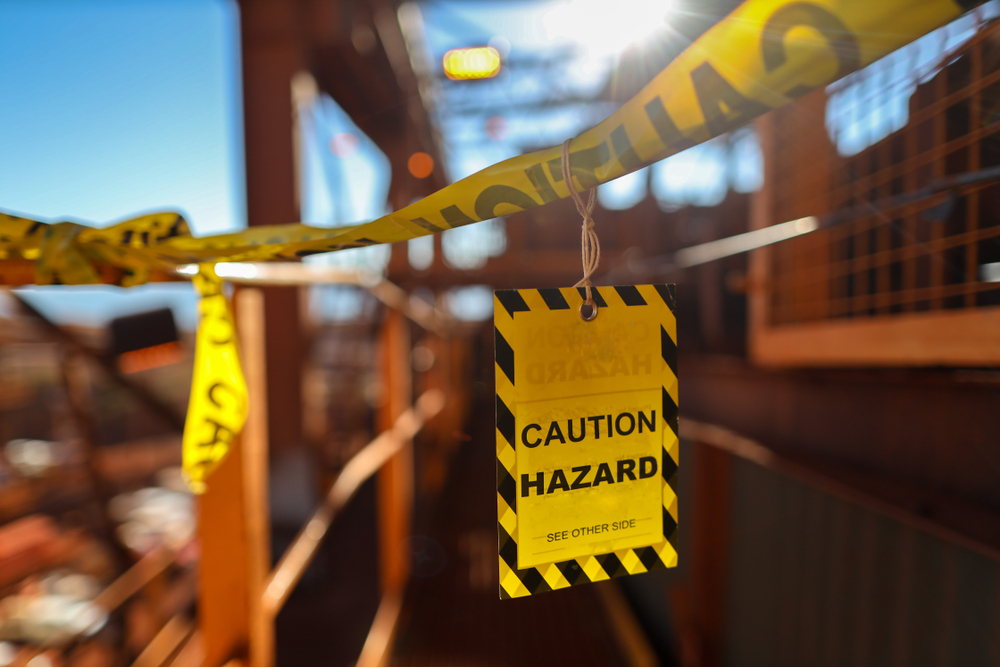The Future of Workplace Safety: How Vision AI is Revolutionizing Hazard Prevention

See It In Action

Safety AI Software in Action
See how Visionify's Safety AI Software monitors workplace safety in real-time
Example Videos
Safety AI Software in Action
See how Visionify's Safety AI Software monitors workplace safety in real-time
Forklift Zone Monitoring with Vision AI
See how Vision AI monitors forklift zones in real-time to prevent accidents
Hard Hat Compliance in Manufacturing
Vision AI PPE Compliance for Manufacturing
Key Takeaways
- Proactive Protection: Vision AI shifts safety from reactive to preventative approaches
- Real-Time Monitoring: Continuous surveillance detects hazards as they develop
- Comprehensive Coverage: AI systems can monitor multiple safety factors simultaneously
- Economic Impact: Preventing accidents significantly reduces the $170 billion annual cost of workplace injuries
- Human-Technology Partnership: Vision AI enhances rather than replaces human safety oversight
The Limitations of Traditional Safety Approaches
Despite decades of evolving safety regulations and protocols, workplace accidents remain disturbingly common. The Occupational Safety and Health Administration (OSHA) reports that workplace injuries cost companies over $170 billion annually in the United States alone, with nearly 1,000 workers sustaining injuries daily.
Traditional safety approaches suffer from fundamental limitations:
Reactive Rather Than Preventative: Conventional methods often address hazards after incidents occur rather than preventing them.
Reliance on Human Vigilance: Manual inspections and monitoring are subject to fatigue, distraction, and limited coverage.
Inconsistent Application: Safety protocols may be applied differently across shifts, locations, or individual supervisors.
Documentation Challenges: Paper-based safety records make trend analysis and proactive planning difficult.
These limitations create a critical gap between safety intentions and outcomes—a gap that emerging technologies like Vision AI are uniquely positioned to bridge.
 Vision AI systems can continuously monitor multiple safety factors simultaneously
Vision AI systems can continuously monitor multiple safety factors simultaneously
Understanding Vision AI Technology
Vision AI, also known as Computer Vision, is a specialized branch of artificial intelligence that enables machines to interpret and understand visual information. Unlike conventional camera systems that merely record footage for later review, Vision AI actively analyzes visual data in real-time, identifying objects, behaviors, and situations that may pose safety risks.
The technology works through deep learning neural networks trained on thousands of images representing both safe and hazardous conditions. This training enables the system to recognize patterns and anomalies that might escape human notice, especially in complex or fast-paced work environments.
Transforming Hazard Prevention with Vision AI
Vision AI is revolutionizing workplace safety through several key capabilities:
Real-Time Hazard Detection
Traditional safety inspections provide only periodic snapshots of conditions, potentially missing developing hazards between checks. Vision AI provides continuous monitoring, instantly identifying:
- Liquid spills that could cause slips and falls
- Blocked emergency exits or fire equipment
- Unsafe equipment operation
- Ergonomic risks during manual handling
This real-time detection enables immediate intervention before incidents occur, fundamentally shifting safety from reactive to preventative.
PPE Compliance Monitoring
Personal Protective Equipment (PPE) is only effective when consistently and properly worn. Vision AI can automatically verify that workers in hazardous areas are wearing appropriate protection such as:
- Hard hats in construction zones
- Safety glasses in manufacturing areas
- High-visibility clothing in traffic areas
- Respiratory protection in contaminated environments
The system can generate instant alerts when violations are detected, enabling supervisors to address compliance issues immediately.
Environmental Monitoring
Beyond human behavior, Vision AI can detect environmental hazards that might otherwise go unnoticed until they cause harm:
- Early signs of smoke or fire
- Dangerous gas accumulations
- Excessive heat in equipment
- Structural weaknesses or instabilities
By identifying these conditions at their earliest stages, Vision AI enables intervention before they escalate into emergencies.
 Vision AI can detect multiple types of safety hazards simultaneously
Vision AI can detect multiple types of safety hazards simultaneously
Pattern Recognition and Predictive Analytics
Perhaps most powerfully, Vision AI can analyze historical data to identify patterns and predict potential hazards before they manifest. By recognizing the precursors to previous incidents, the system can alert safety personnel to developing risk factors, enabling truly preventative safety management.
Vision AI in Action: Real-World Applications
The transformative potential of Vision AI isn't theoretical—it's already being realized across multiple industries:
Manufacturing: Vision AI systems monitor production lines for unsafe practices, equipment malfunctions, and PPE compliance, reducing accident rates by up to 30% in some facilities.
Construction: On dynamic construction sites, Vision AI tracks worker locations relative to heavy machinery, monitors structural stability, and ensures proper fall protection usage.
Warehousing: In fast-paced warehouse environments, Vision AI monitors forklift operations, detects obstacles in traffic lanes, and ensures proper lifting techniques to prevent injuries.
Chemical Processing: Vision AI provides early detection of leaks, spills, or abnormal conditions, potentially preventing catastrophic incidents and environmental damage.
The Economic and Ethical Imperative
Implementing Vision AI for safety isn't merely a technological upgrade—it's both an economic and ethical imperative. Beyond the moral obligation to protect workers, the financial case is compelling:
- Reduced workers' compensation claims
- Lower insurance premiums
- Decreased downtime and productivity losses
- Minimized equipment damage
- Avoided regulatory fines and legal liabilities
With the global Vision AI market projected to grow from $17.2 billion in 2023 to over $45.7 billion by 2028 (MarketsandMarkets), organizations across industries are recognizing these benefits and investing accordingly.
Implementation Considerations
Organizations looking to leverage Vision AI for safety should consider several factors:
Integration with Existing Systems: How will Vision AI complement current safety protocols and technologies?
Privacy Considerations: Clear policies regarding data collection and usage are essential for addressing privacy concerns.
Phased Implementation: Starting with high-risk areas allows organizations to refine their approach before full-scale deployment.
Human-AI Partnership: Vision AI should enhance rather than replace human safety oversight, with technology and personnel working in concert.
Conclusion: A Safer Future Through Technology
The future of workplace safety lies at the intersection of human expertise and technological innovation. Vision AI represents a paradigm shift from reactive to proactive safety management—identifying and addressing hazards before they cause harm rather than merely responding to incidents after they occur.
As this technology continues to evolve and become more accessible, organizations that embrace Vision AI will not only protect their most valuable asset—their people—but also gain competitive advantages through improved efficiency, reduced costs, and enhanced reputation.
The promise of Vision AI isn't just a safer workplace; it's a fundamental transformation in how we approach and achieve safety in the modern industrial environment.
Ready to transform your approach to workplace safety? Contact Visionify today to learn how our Vision AI solutions can help prevent accidents before they happen.
Frequently Asked Questions
Find answers to common questions about this topic
Want to learn more?
Discover how our Vision AI safety solutions can transform your workplace safety.
Schedule a DemoSchedule a Meeting
Book a personalized demo with our product specialists to see how our AI safety solutions can work for your business.
Choose a convenient time
Select from available slots in your timezone
30-minute consultation
Brief but comprehensive overview of our solutions
Meet our product experts
Get answers to your specific questions
Related Articles
Subscribe to our newsletter
Get the latest safety insights and updates delivered to your inbox.


